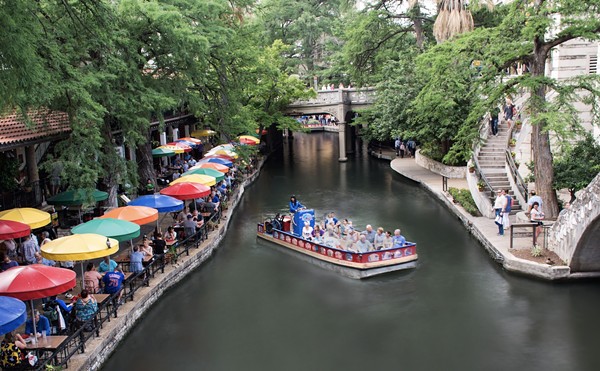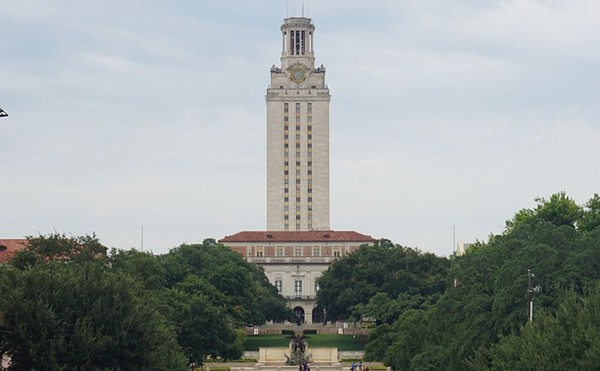The City is recharging the water-quality ordinance
When Phil Hardberger was campaigning for mayor last spring, he said he could not and did not want to justify urban sprawl over the Edwards Aquifer Recharge Zone. But he also acknowledged that grandfather clauses protect property-owners’ investments.
“My primary concern as a citizen and as a mayor would be to protect the purity of the water,” he said as he marched along the campaign trail. “I want the water-quality ordinance to be as strong as possible.”
Many City Council candidates, including Art Hall, professed their desire to protect San Antonio’s primary source of potable water, and in November, Aquifer Guardians in Urban Areas challenged them to make good on their promise to protect the aquifer’s Recharge, Contributing, and Transition zones from unrestricted urban development.
Hall, who chairs a committee on water quality, says he will convene a final meeting, tentatively set for 5:30 p.m. Wednesday, January 18, in the Municipal Plaza Building’s B room to consider final recommendations, which will be forwarded to the Quality of Life Committee and ultimately to City Council.
AGUA relied on input from environmental engineers, hydrologists, City staff, and municipal-law attorneys to draft a series of proposed revisions to the City’s 1994 water-quality ordinance. (See Chapter 34 of the Unified Development Code.) One proposed reform calls for an across-the-board, 15 percent limit on impervious cover, or pavement, on the portions of the Edwards Aquifer that lie within the City’s jurisdiction.
The 15 percent limit exceeds percentages recommended by second-term Councilman Art Hall, who has proposed a reduction from 65 percent to 50 for commercial development; from 50 to 40 percent for multi-family and office development; and from 30 percent to 20 for residential development over the Recharge and Contributing zones.
“The biggest issues are impervious cover and best management practices on water-detention facilities (stormwater retention ponds, for example),” says Hall. “The real aim is to improve the 1994 water-quality ordinance, to make sure we are protecting the aquifer. I’m fine with the recommendations thus far, but they are not final at this point.”
Annalisa Peace, executive director of AGUA, sent a letter in November to Hardberger, maintaining that “intensive development within San Antonio and its extraterritorial jurisdiction should be directed downstream of the Edwards Recharge Zone. These reforms, if adopted, will maintain the scenic beauty of our portion of the Hill Country while aiding in the reduction of costly drainage projects required to address flash floods resulting from intensive building on the Recharge Zone.”
| “We are subsidizing developers because we will have to pay for the water-treatment plants.” – Jon Thompson |
Former City Councilwoman Maria Berriozabal campaigned tirelessly in the 1980s to protect the aquifer from urban sprawl. She said that after the PGA spectacle in which elected officials ignored the will of the public to vote on a referendum, and instead allowed development over a particularly sensitive portion of the zone, “we’re basically looking for a change of culture at City Hall.”
Local architect Jon Thompson says San Antonio is “on a slippery slope now is the time to put in a set of sane regulations. This is a now or never situation.”
Thompson says the current system allows developers to build on the aquifer, make a buck, and leave the tab for the City when water-treatment facilities become necessary. “We are subsidizing developers because we will have to pay for the water-treatment plants.”
George Rice, Edwards Aquifer Authority board member and a hydrologist, says that although the aquifer is not totally polluted, there are “manmade contaminants in the Edwards, and they’re there because we’re putting them there. They’re there because we’re not being careful. This is an early warning, a big red flag waving at us, we’re doing things the wrong way.”
Rice says that current pollutant concentrations are very low, but Bexar Metropolitan Water District had to shut down a Castle Hills well in the 1990s, and a San Antonio Water System well has occasional pollution problems. “We’re not at a point where deterioration will accelerate rapidly, but the more we build the worse it will get. We’re degrading our water supply.”
AGUA submitted a long list of proposed reforms to the water quality ordinance, but the two main proposals include the 15 percent limit and a restriction on storing hazardous materials over the aquifer. Another proposal is to eliminate grandfathering rights on property development.
“Some people have the gall to say, It’s too late in Bexar County, and we might as well continue (development),” says Rice. “Others say, Build treatment plants and use treated water. In effect the people of San Antonio will subsidize other people messing up their water supply, and it will cost tens of millions of dollars to treat it.”
Rice says City Council should adopt the AGUA reforms and close the loopholes in the 1994 ordinance. “Say 15 percent across the board and regulate hazardous material. We’ve already waited far too long.” •
By Michael Cary



















